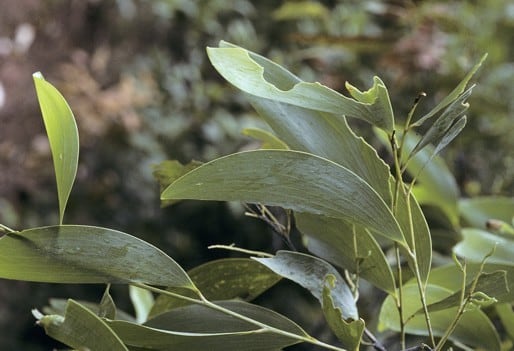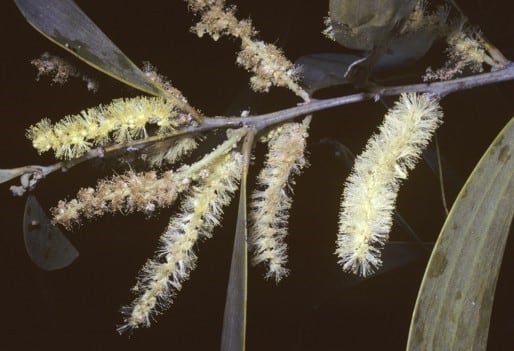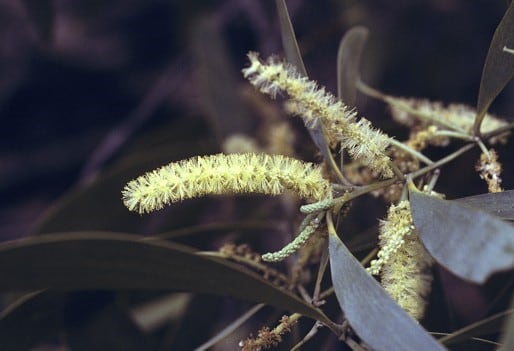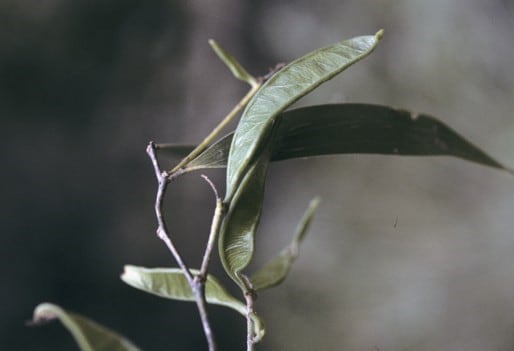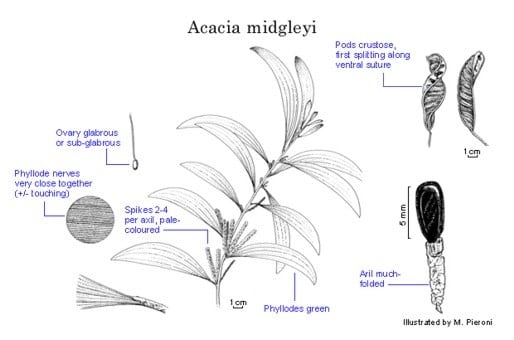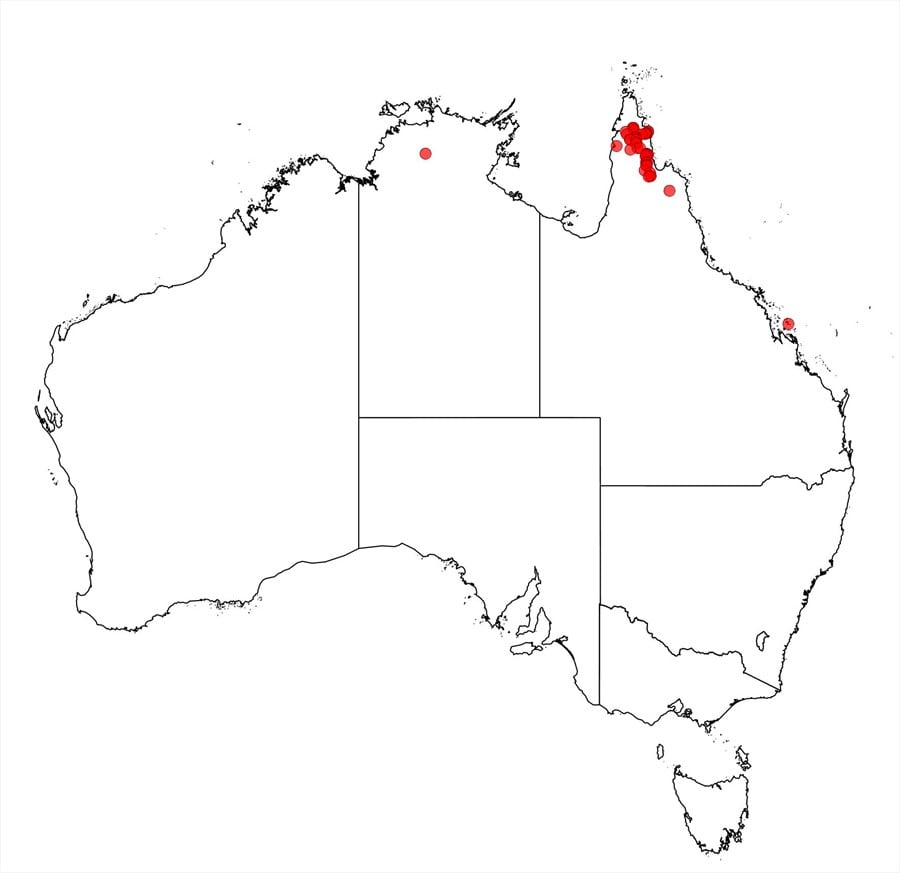Acacia midgleyi M.W.McDonald & Maslin
WATTLE
Acacias of Australia
Common Name
Cape York Salwood
Family
Fabaceae
Distribution
Endemic to Cape York Pen., Qld, where it extends from the Coleman R. N to the Wenlock–Olive rivers region. Most common on the uplands of the eastern side of Cape York Pen.
Description
Trees 8–25 m tall, canopy green, single-stemmed or sparingly divided near base, trunks on oldest plants to 60 (–90) cm diam. Bark hard and shallowly rimose. Branchlets subterete at extremities, glabrous. Juvenile phyllodes highly glossy. Phyllodes dimidiate to subfalcate, sometimes falcate, 8–12.5 (–16.5) cm long, (0.8–) 1–3.5 (–4.2) cm wide, glabrous, mid to dark green (fresh) drying milky green; longitudinal nerves numerous, parallel, very closely-spaced (5–10 per mm) and ±touching; pulvinus 4–10 mm long. Inflorescences simple, 2–4 per axil; peduncles 3–10 mm long, glabrous; spikes 3–7 cm long, interrupted, almost cream to lemon yellow. Flowers 5-merous; calyx gamosepalous, shallowly dissected; ovary glabrous or sparsely hairy above middle. Pods narrowly oblong, flat or 1–3 times spirally twisted, ±straight, 5–12 cm long, 1–2 (–2.5) cm wide, dehiscing along ventral suture, crustose, resinous, +/- transversely nerved, the nerves not prominently raised. Seeds ±transverse, ovate, elliptic or obovate, 4–7 mm long, 2–4 mm wide, glossy, black; funicle/aril many-folded, 3–10 mm long (unextended), creamy-grey or greyish (aging pale yellow).
Habitat
Occurs along river banks, seasonal drainage systems and is a component of rainforests in the region.
Specimens
Qld: 11 km E of Aurukun, J.R.Clarkson 4515 (DNA, K, MEL, MO, PERTH, QRS); Cape York Pen., Wenlock R. crossing on Coen–Bamaga Rd (71 km N of Weipa turnoff), M.W.McDonald & B.R.Maslin BRM 7652 (CANB, BRI, NSW, PERTH); McIlwraith Ra., 28.9 km E along Leo Ck Mine track, M.W.McDonald 2350 & T.K.Vercoe (BRI, CANB, K, NSW, PERTH).
Notes
Acacia midgleyi has commercial potential as a forestry plantation species on sites where A. peregrina (endemic in New Guinea) and A. crassicarpa perform well, but its likely success as a plantation species will depend on comprehensive provenance trials because natural stands exhibit considerable variation in habit.
Acacia midgleyi is a member of the ‘A. aulacocarpa group’ related to A. crassicarpa, A. lamprocarpa and especially A. peregrina from New Guinea. It is distinguished from these relatives by the following combination of characters: seedling phyllodes highly glossy, adult phyllodes milky pale green (when dry) with minor nerves very close together, spikes 2–4 per axil and 3–7 cm long, ovary normally glabrous, pods crustose and funicle/aril creamy-grey or greyish, much folded and 3–10 mm long when unextended. A putative hybrid between A. crassicarpa and A. midgleyi occurs at the northern tip of Cape York Pen. Acacia midgleyi is sometimes sympatric with, and superficially resembles, A. polystachya but the two species are not particularly closely related; A. polystachya is readily distinguished by its narrower pods, yellow funicle/aril encircling the seeds and phyllodes which have 2 of the main nerves running together along the midline near the base.
Acacia midgleyi was mentioned in Fl. Australia 11B: 169 (2001) under A. aulacocarpa, but was formally recognized too late to be fully described in that volume.
Adult phyllodes show considerable variation in dimensions both within and between populations. Plants from the McIlwraith Ra. differ in habit and habitat from most other populations of the species. An unresolved entity from Stanley Is., near Bathurst Head, Qld, that resembles A. midgleyi requires further study. See McDonald & Maslin, Australian Systematic Botany 13(1): 21–78 (2000), for discussion.
FOA Reference
Data derived from Flora of Australia Volumes 11A (2001), 11B (2001) and 12 (1998), products of ABRS, ©Commonwealth of Australia
Author
B.R.Maslin
This identification key and fact sheets are available as a mobile application:
URL: https://apps.lucidcentral.org/wattle/
© Copyright 2018. All rights reserved.
